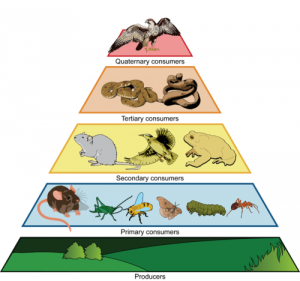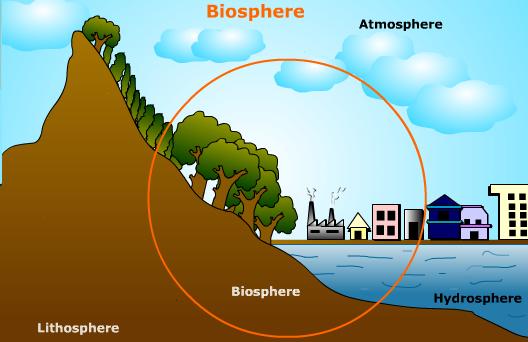as an agricultural student I know about ecology, in this post I will present about basic knowledge of ecology, history, ecology science position, and relationship with other science. I expect steemian and all readers can understand about the good and true ecology.....

all of organisms living in an environment will interact with their environment. Interaction occurs both with other living beings as well as with objects around themr.
In everyday life, especially in rural areas, of course you often see farmers are digging land, plowing, planting, irrigating rice fields, cultivate, and other activities. This peasant's activity has actually been done a few centuries ago. Indirectly they already know of the relationship between the plant with the soil, plants with water, plants with nutrients, and so forth. What the farmers do is actually applying ecology. So ecological applications have actually been done by humans long before the ecological term itself was introduced by ecologists. In contemporary agriculture, humans have already applied many natural principles to support good ecological processes.
In ancient times farming in a way is still very simple, but at this time has applied the principles of ecology. For example the use of manure, green manure, compost, and other natural fertilizers. Basically farmers already know that in livestock manure, compost, and leaves contain nutrients that plants need, so with what is done by these farmers to help ecological processes, especially in relation to the cycling or nutrient cycle.
Ernst Heakel 1866 "ecology is a comprehensive science that studies the relationship between organisms and the environment"
Burdon-sanderson 1893 " Ecology is the study of external relations or relationships between plants and animals, and its existence in the past and present. external relationships to distinguish between physiology and morphology "
Andrewartha 1961 "scientific knowledge of the distribution and abundance of an organism ".
Krebs 1972 " knowledge of the interactions that determine the distribution and abundance of an organism".

The ecological pyramid is a diagram illustrating how ecologically important factors, such as energy, biomass, and population size, vary between trophic levels within an ecosystem. Traditionally, this diagram places the primary producers (photosynthetic organisms like plants) at the bottom and the highest trophic level at the top of the diagram. The portion size of the diagram associated with each trophic level represents the amount of energy, biomass, or number of individuals found at each trophic level.
Pyramid ofNumber
Organisms with each trophic level can be represented in number pyramids, as we organisms at the first trophic level are usually the most abundant, whereas organisms at the second, third and subsequent trophic levels are further reduced. Can be said that most normal communities, the number of plants is always more than the herbiivora organism. Thus the number of herbivores is always more than the number of carnivores level 1. Carnivore level 1 is also always more than the number of carnivores level 2. This pyramid is based on the number of organisms at each trophic level.Pyramid of biomassa
Often the pyramid of modest numbers is less helpful in modeling the flow of energy in the ecosystem. A more realistic blend can be presented with a biomass pyramid. Biomass is a measure of the weight of living matter at a given time. To measure the biomass at each trophic level, the average weight of the organisms at each level should be measured and then the number of organisms at each level is estimated.
The biomass pyramid serves to describe the mass mix of all organisms in a particular habitat, and is measured in grams. To avoid habitat destruction, it usually takes only a few samples and is measured, then the total of all biomass is calculated. Such measurements will provide more accurate information about what is happening to the ecosystem.pyramid of biomass energy
Often the pyramid of biomass energy does not always provide the information we need about a particular ecosystem. Others with the pyramid of energy made based on observations made in a long time. Energy Pira is able to provide the most accurate picture of energy flow in the ecosystem.
Every science has the boundaries of the study area. It should be understood that the boundaries of the work area of a science generally overlap with the boundaries of the working area of other sciences. In connection with that it is appropriate if we want to know also the boundary of the working area of ecology. To learn a fairly clear picture of the boundaries of the work area of ecology it is possible to use the concept model of Miller. The concept assumes that the entire universe is an ecosystem composed by various components or unity. In an ecosystem one or a group of components can not stand alone apart from other groups of entities. In this case the first component group will be the second group, the second component group will form the third group,.
Ecological science is part of biological science or biology. The scope of ecology can be explained by looking at the spectrum of biological sciences that describes the levels or levels of organizational life of biota such as chart
example:

Ecosystems formed from the formation of macromolecules, then become protoplasm, cells, tissues, organs, until then into organisms or living things. A collection of the same organism, then becomes a population, and subsequently a collection of various populations will form a community, such as human communities, animal communities and vegetation. A combination of cooperation and interaction between community one with other communities will form an ecosystem. Ecological science basically has the scope or scope of studies on the level or level of organisms of certain organisms, ranging from population, community to the biosphere.
Individual
The individual is a single organism. The organism that lives independently, is physiologically free and has no organic relation to each other.
Population
In population biology is a collection of individuals with similar characteristics (species) that live in the same place and have the ability to reproduce among each other. The population of a species is part of a community.
Komunitas
Komunitas adalah sebuah kelompok sosial dari beberapa organisme yang berbagi lingkungan, umumnya memiliki ketertarikan dan habitat yang sama. Dalam komunitas manusia, individu-individu di dalamnya dapat memiliki maksud, kepercayaan, sumber daya, preferensi, kebutuhan, risiko, kegemaran dan sejumlah kondisi lain yang serupa. Komunitas berasal dari bahasa Latin communitas yang berarti “kesamaan”, kemudian dapat diturunkan dari communis yang berarti “sama, publik, dibagi oleh semua atau banyak.
Ecosystems
An ecosystem is an ecological system formed by an inseparable reciprocal linkage between a living being and its environment. The ecosystem can also be said as a whole and complete unity of all elements of the environment that affect each other.
Ecosystem Concepts
The interrelationships between living things with other living beings, as well as with non-living things in their environment, form ecosystems. Ecosystem is one of the study areas studied in the branch of biology, that is ecology. living beings with other living beings and with the physical environment. This was revealed by German zoology expert Ernst Haeckel (1866). Ecology is a relatively new branch of science, emerging only in 1970. However, ecology has a great influence on other branches of biology. Ecology studies how living things can sustain their lives by establishing relationships between living things and with non-living things in their life or environment.
The transfer of energy and matter from one sentient being to another and into its environment and the factors causing it.
Changes in the population of a species at different times and the factors that cause it.
Interpersonal connection (interpersonal interactions) of living things and relationships between living things and their environment. The components that make up the environment can be differentiated into abioti and biotic components.
reference
https://id.wikipedia.org/wiki/Ekologi
https://agnazgeograph.wordpress.com/2013/02/10/ruang-lingkup-ekologi/
http://www.sridianti.com/pengertian-piramida-ekologi-dan-macam-piramida-ekologi.html
http://www.merbabu.com/artikel/ekologi.php
[source](Begon, M., J.L. Harper & C.R. Townsend. (1986). Ecology. Individuals,
Populations and Communities. Blackwell Sci. Pub. Oxford.)
follow @rabo
You received a 60.0% upvote since you are a member of geopolis.
To read more about us and what we do, click here.
https://steemit.com/geopolis/@geopolis/geopolis-the-community-for-global-sciences-update-2-higher-base-votes-new-logo
If you do not want us to upvote and comment on your posts concerning earth and earth sciences, please reply stop to this comment and we will no longer bother you with our love ❤️
Downvoting a post can decrease pending rewards and make it less visible. Common reasons:
Submit
Thanks @geopolis
I love science :)
Downvoting a post can decrease pending rewards and make it less visible. Common reasons:
Submit
Bereh that @rabo
Downvoting a post can decrease pending rewards and make it less visible. Common reasons:
Submit
Thanks yu
Downvoting a post can decrease pending rewards and make it less visible. Common reasons:
Submit
Unfortunately, our global ecology is struggling a lot nowadays. You can check my last article about my personal experience with Chinese pollution.
Downvoting a post can decrease pending rewards and make it less visible. Common reasons:
Submit
Thank you for visiting my article, I will visit on your post, and we can join in @geopolis , there we will meet with science lover.
More information :
https://steemit.com/geopolis/@geopolis/geopolis-the-community-for-global-sciences-update-2-higher-base-votes-new-logo
Downvoting a post can decrease pending rewards and make it less visible. Common reasons:
Submit
Good job broe
Downvoting a post can decrease pending rewards and make it less visible. Common reasons:
Submit
Thanks so much bg bones
Downvoting a post can decrease pending rewards and make it less visible. Common reasons:
Submit
You are welcome @rabo
Downvoting a post can decrease pending rewards and make it less visible. Common reasons:
Submit
Nice post brotherbold
Downvoting a post can decrease pending rewards and make it less visible. Common reasons:
Submit